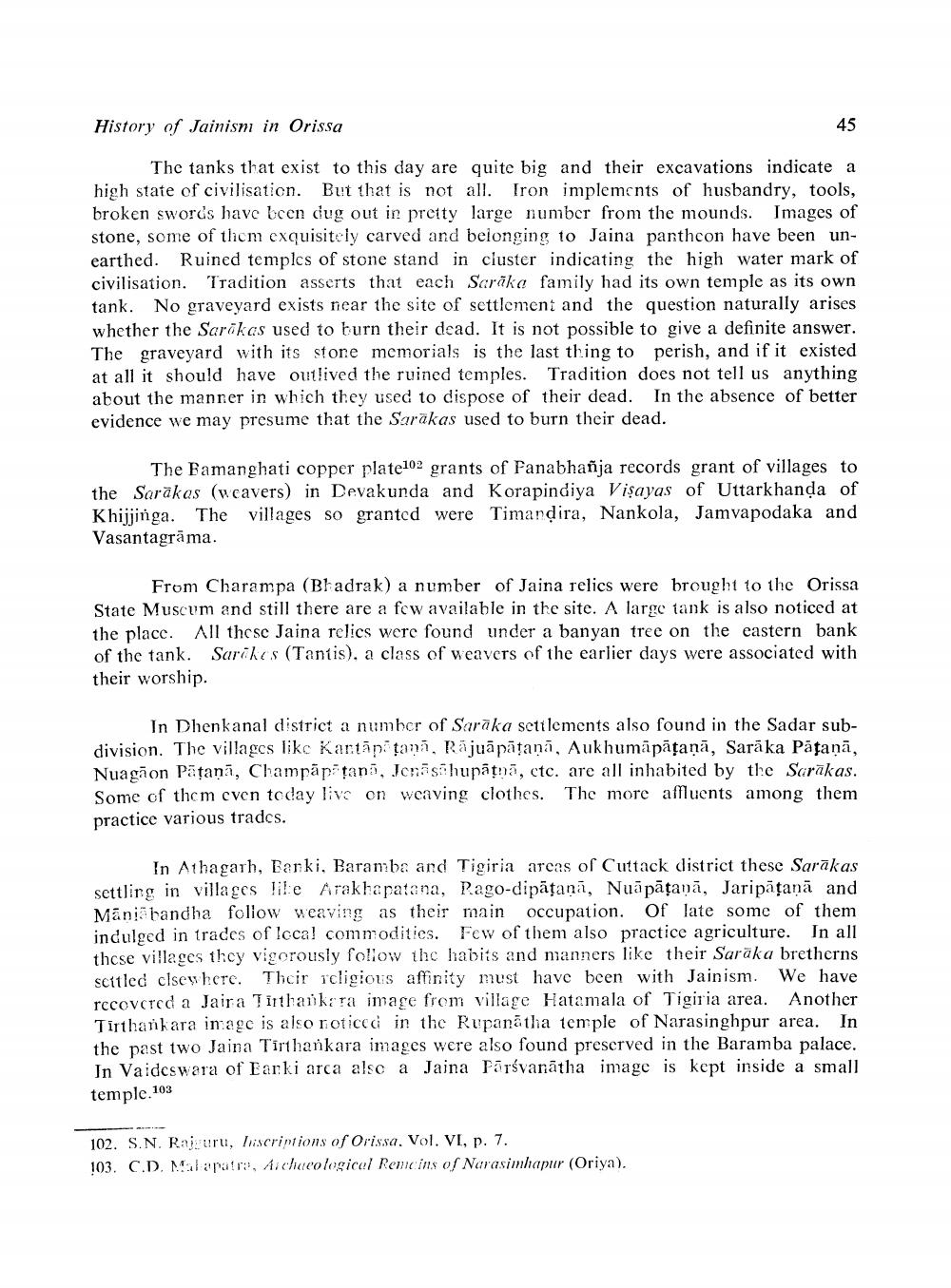________________
History of Jainism in Orissa
45
The tanks that exist to this day are quite big and their excavations indicate a high state of civilisation. But that is not all. Iron implements of husbandry, tools, broken swords have been dug out in pretty large number from the mounds. Images of stone, some of them exquisitely carved and belonging to Jaina pantheon have been unearthed. Ruined temples of stone stand in cluster indicating the high water mark of civilisation. Tradition asserts that each Sarāke family had its own temple as its own tank. No graveyard exists near the site of settlement and the question naturally arises whether the Sarākas used to burn their dead. It is not possible to give a definite answer. The graveyard with its stone memorials is the last thing to perish, and if it existed at all it should have outlived the ruined temples. Tradition does not tell us anything about the manner in which they used to dispose of their dead. In the absence of better evidence we may presume that the Sarakas used to burn their dead.
The Famanghati copper plate102 grants of Fanabhañja records grant of villages to the Sarākas (weavers) in Devakunda and Korapindiya Vişayas of Uttarkhanda of Khijjinga. The villages so granted were Timandira, Nankola, Jamvapodaka and Vasantagrāma.
From Charampa (Bhadrak) a number of Jaina relics were brought to the Orissa State Muscum and still there are a few available in the site. A large tank is also noticed at the place. All these Jaina relics were found under a banyan tree on the eastern bank of the tank. Sarikos (Tantis), a class of weavers of the earlier days were associated with their worship.
In Dhenkanal district a number of Sarāka settlements also found in the Sadar subdivision. The villages like Kartapiţanā. Rajuāpāțanā, Aukhumāpāțaņā, Sarāka Pāțaņā, Nuagāon Pāțaņā, Champār tană, Jen sähupātā, ctc. are all inhabited by the Sarākas. Some of them even today live on weaving clothes. The more affluents among them practice various trades.
In Athagarh, Banki, Baramba and Tigiria areas of Cuttack district these Sarākas settling in villages lile Arakhapatana, Rago-dipātaņā, Nuāpāšanā, Jaripāțaņā and Manja tandha foliow weaving as their main occupation. Of late some of them indulged in trades of local commodities. Few of them also practice agriculture. In all these villages they vigorously follow thc habits and manners like their Sarāka bretherns scitled clsewhere. Their religious affinity must have been with Jainism. We have recovered a Jair a Tinthaikara image frem village Hatamala of Tigiria area. Another Tirthankara inage is also noticed in the Rupanātha temple of Narasinghpur area. In the past two Jaina Tirthankara images were also found preserved in the Baramba palace. In Vaideswara of Earki arca also a Jajna Pārsvanātha image is kept inside a small temple. 103
102. S.N. Rajguru, Triscriptions of Orissa. Vol. VI, p. 7. 103. C.D. Malapatre, Archaeological Rencins of Narasimhapur (Oriya).




